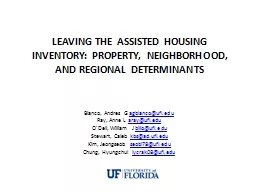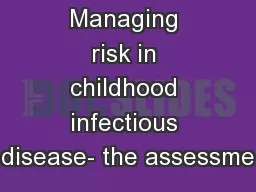PPT-LEAVING MUM ALONE?
Author : kittie-lecroy | Published Date : 2016-03-26
THE EFFECT OF POSTDIVORCE SINGLEMOTHERHOOD ON CHILDREN LEAVING HOME DECISIONS Letizia Mencarini University of Turin Collegio Carlo Alberto amp CHILD Elena Meroni
Presentation Embed Code
Download Presentation
Download Presentation The PPT/PDF document "LEAVING MUM ALONE?" is the property of its rightful owner. Permission is granted to download and print the materials on this website for personal, non-commercial use only, and to display it on your personal computer provided you do not modify the materials and that you retain all copyright notices contained in the materials. By downloading content from our website, you accept the terms of this agreement.
LEAVING MUM ALONE?: Transcript
Download Rules Of Document
"LEAVING MUM ALONE?"The content belongs to its owner. You may download and print it for personal use, without modification, and keep all copyright notices. By downloading, you agree to these terms.
Related Documents














![[BEST]-Mum Coupons: Coupon Book for Mum, 25 Pre-filled Blank Vouchers for Mum. Unique](https://thumbs.docslides.com/972399/best-mum-coupons-coupon-book-for-mum-25-pre-filled-blank-vouchers-for-mum-unique-gift-for-mother-s-day-birthday-christmas-anniversary-or-spontaneous-gift-for-mom-black-white-version.jpg)